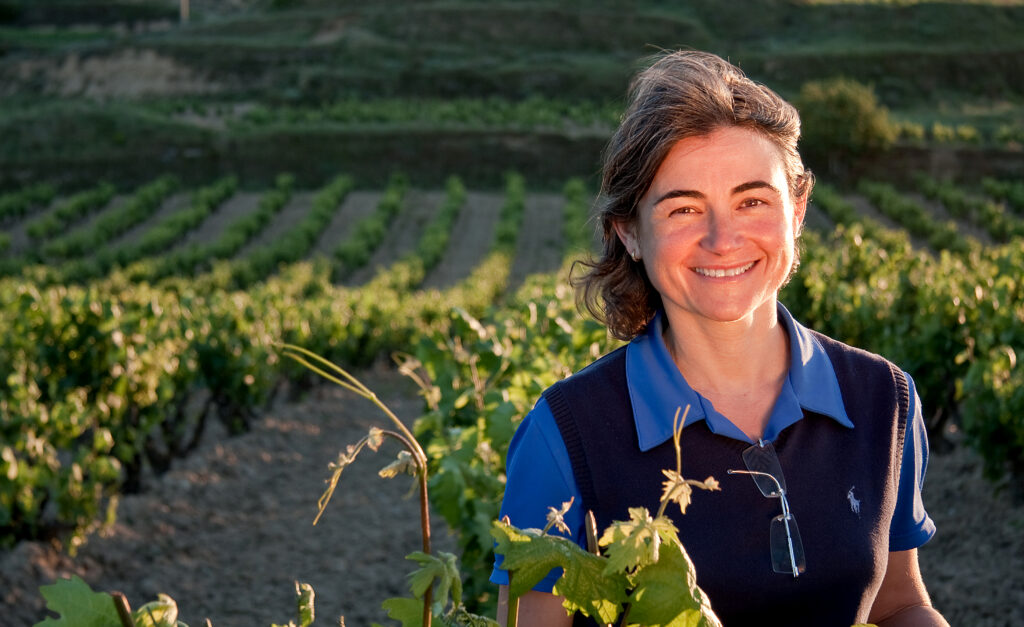
“Making castles in Spain, making castles in La Rioja History of La Rioja, terroir and quality “
There’s no denying that LA RIOJA is different from other Spanish wine regions, and also that LA RIOJA is renowned for its wines.
- I ask myself ¿ porquoi?
There are two very important facts in this story:
- The influence of France due to phylloxera and
- Railroads as a means of commerce.
ROMAN PERIOD: Vines were first planted by the Romans in the 2nd century BC in the area now known as LA RIOJA.
- 10th AND 11th CENTURIES: It only acquired real importance in the 10th and 11th centuries, as Christian rule stabilized. To celebrate the Eucharistic ritual.
14th TO 16th CENTURIES: Wool dominated the local economy and exports to other regions, mainly Bilbao and the Cantabrian coast.
- Gradually, wine became an integral part of shipments, benefiting from the opening or improvement of routes to the north.
In the 17th CENTURY, LA RIOJA was already almost monocultured.
18th CENTURY. The perverse effects are deplored:
-Crises of overproduction.
-Mis-sales.
-Disappearance of food crops and livestock.
-Worsening periods of crisis.
A few testimonials praise the quality of local wines. Writings available at the end of the 18th century emphasize the damaging effects of this monoculture, and the mediocre quality of the wines produced:
– For lack of suitable facilities and, above all, know-how.
Wine couldn’t travel. Wine is an eminently perishable commodity, said to literally “rot” during the summer following its production.
The winegrower had to get rid of the wine he had left to encuage the next harvest. There are many references to wine being thrown down the gutter or used to replace water in the mortar. Wine was used to make buildings.
1756 | Mr. Manuel Esteban Quintano
Born in Labastida in 1756, Canon of Burgos Cathedral since 1782. He introduced Bordeaux winemaking techniques to Spain. He was well aware of the success of Bordeaux wines, which were sold in England at very high prices. He traveled to Bordeaux and visited the great Châteaux: Lafite, Margaux, Haut Brion and Latour, learning French winemaking techniques. He writes the book “La méthode de faire du vin à Bordeux”. He returns to La Rioja and applies the new Bordeaux technique. It’s a great success, and he manages to sell his wines in America.
1848 | D. Luciano Murrieta, Marqués de Murrieta
Founder of Bodegas Marqués de Murrieta in 1852. He organized several trips to Bordeaux and returned to Spain in 1848. In 1850 he sent his first barrels to Mexico and Cuba, where they were immediately sold at a very high price. Murrieta ceased his winemaking activities, arguing: Lack of means, desire to travel and live in different places without having to stay in one fixed location. 1877. Murrieta acquired the Ygay estate near Logroño, where he built his famous winery.
1860 | D. Guillermo Hurtado de Amézaga, Marqués de Riscal
Founder of Bodegas Marqués de Riscal in 1852. As an enlightened aristocrat with a special interest in the progress of modern European agriculture, Riscal adored the vitiviniculture of the Gironde, many of whose secrets he had discovered over the years through his contacts with the Bordeaux bourgeoisie.
1862 | Marqués de Riscal and the history of Medoc Alavés
The knowledge Riscal had acquired on his travels to Bordeaux, and his willingness to learn, were not enough to produce quality wine. He needed all the technological know-how he could get his hands on. That’s why the Council hired an expert from France to teach the Bordeaux technique and apply it to the Alava terroir, now known as La Rioja Alavesa.
